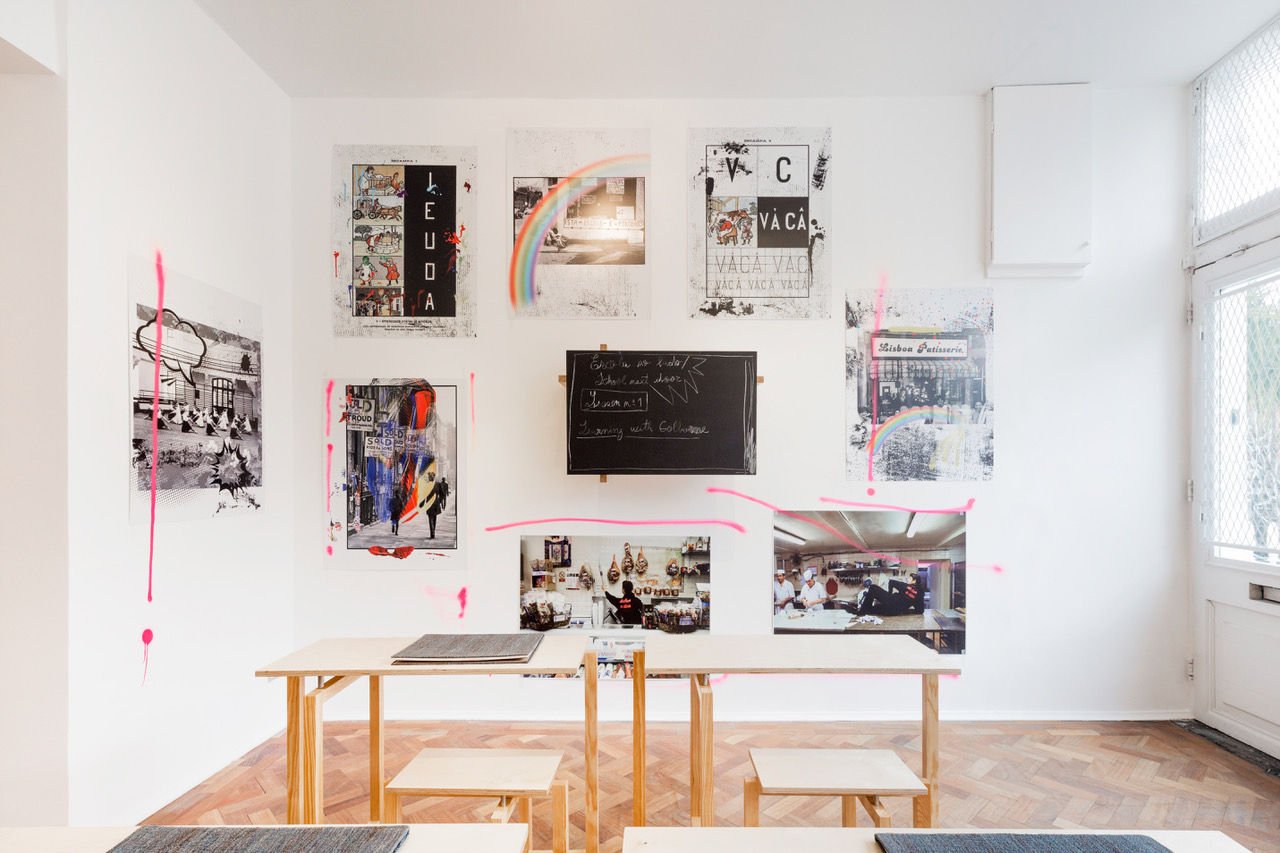Staying Connected With Rita GT
Rita GT is a mixed media artist who integrates social messages and vibrant art. She profoundly shared with us these words when we first worked with her: “Once my work is done and shown, it doesn’t belong to me anymore. It’s the beholder that reads the work, since it’s a very subjective experience.”
Some of you who have been with us since the Art of Kindness days might remember Rita and her colorful and conversation provoking Candonga Series from the exhibition. We thought it would be a great full circle moment to feature her and give everyone an update.
Rita GT was born in Porto in 1980 and still resides in Portugal. She gained a BA in Communication Design from the Faculty of Fine Arts, University of Porto and an MA in Fine Arts from Malmö Art Academy.
She founded the e-studio Luanda Project, an active collaboration platform between herself and other artists developing a structure of thought, a path, and a focus on art as critical thinking on Contemporary Art of Africa and the diaspora. Rita was also the curator for the Angolan Pavilion at the 56th Venice Biennale in 2015. For Rita, the relationship to history and place, and her cultural and geographical mobility is a significant component of her work and source of inspiration.
Rita engages in ongoing research into the condition of the post-modern and peripatetic artist. Her work envisions a system of art making and exhibiting that is no longer tied to a sense of place, and highlights the status of the artist as an international worker. Rita continues on with her art performances and recently welcomed a new member to her family. Read on to hear from Rita on why the role of an artist is as important in today’s cultural evolution.
School Next Door, London, 2018.
What do you think about the role of the artist in today's world? Has it changed from your previous conception, or when you first wanted to be an artist?
I always saw the role of an artist with a strong commitment and engagement with politics and society. Community based art movements are taking off in Eastern parts of the world. This is the future for the mission of an artist. It has always been the main mission and focus but people get lost in pursuing success around money.
Do you find yourself relying more on digital mediums to connect with society?
Yes, even though I was already working very much on digital mediums.
Given the uncertainty we face, how does one continue to approach the practice of creativity? Is it the same, or have you made adjustments?
I’m experiencing more difficulties when trying to focus on my studio practice.
Have you rethought what it means to be connected with another person on a daily basis? Or changed the ways you stay connected?
Yes, I’ve been reflecting on that for some time.
Has covid interrupted any of your planned projects for this year?
Yes, all of them.
Candonga Series, 2015.
What keeps you feeling balanced and helps you endure?
Meditation, family, friends.
As an artist, how do you think about continuing to make a difference? What do you see the role of storytelling to be in this quest?
More than ever we, as artists, have a strong mission and responsibility to humanity. This recognition is missing in a majority of societal and governmental spaces. We need to better understand this role and invest more in arts and culture.
I want to be thoughtful about how I contribute to the shifting art landscape and humanitarian climate. Life is political now, and people want to know where artists stand. That is part of our evolving role, and the way in which we communicate this is our story.
We’ve seen that the pandemic has negatively impacted cultural evolution and limited our access to creative outlets.We see this manifesting as an increase in people yearning to connect to culture. How can we rethink how artists and individuals in communities stay connected and play a more active role?
We must change our investment priorities. As I mentioned before, I strongly believe that culture and art must be made a priority. It’s critical to organize more private funds and initiatives with tax perks, so we can have a circular art economy. There are ways we can be more creative around how and when we engage with art. This shift will drive more attention and appreciation here. It will also make it easier for artists and communities to stay connected.



